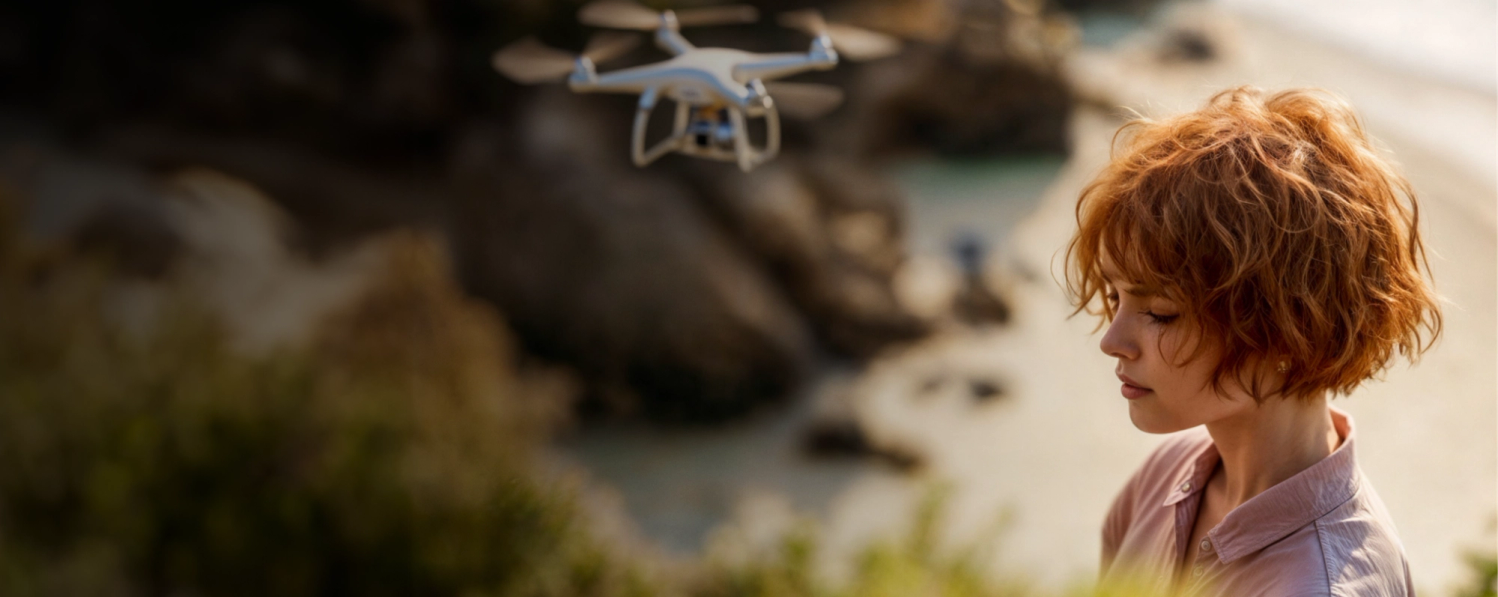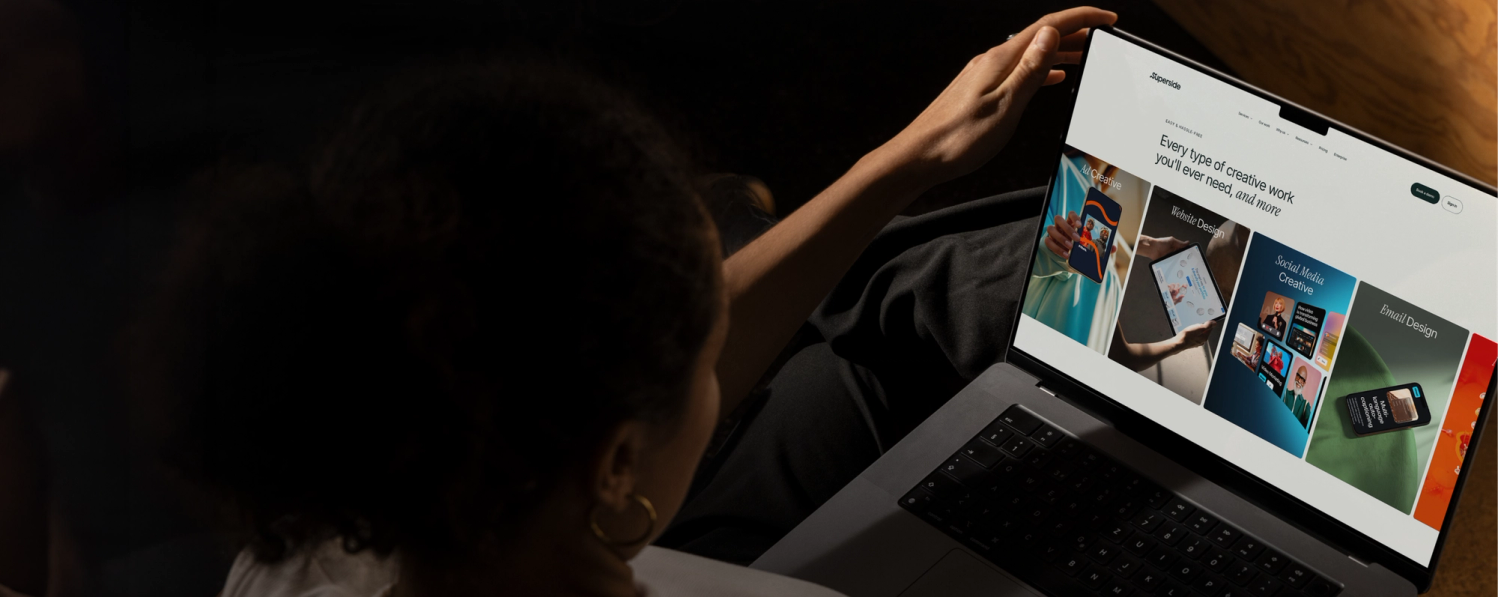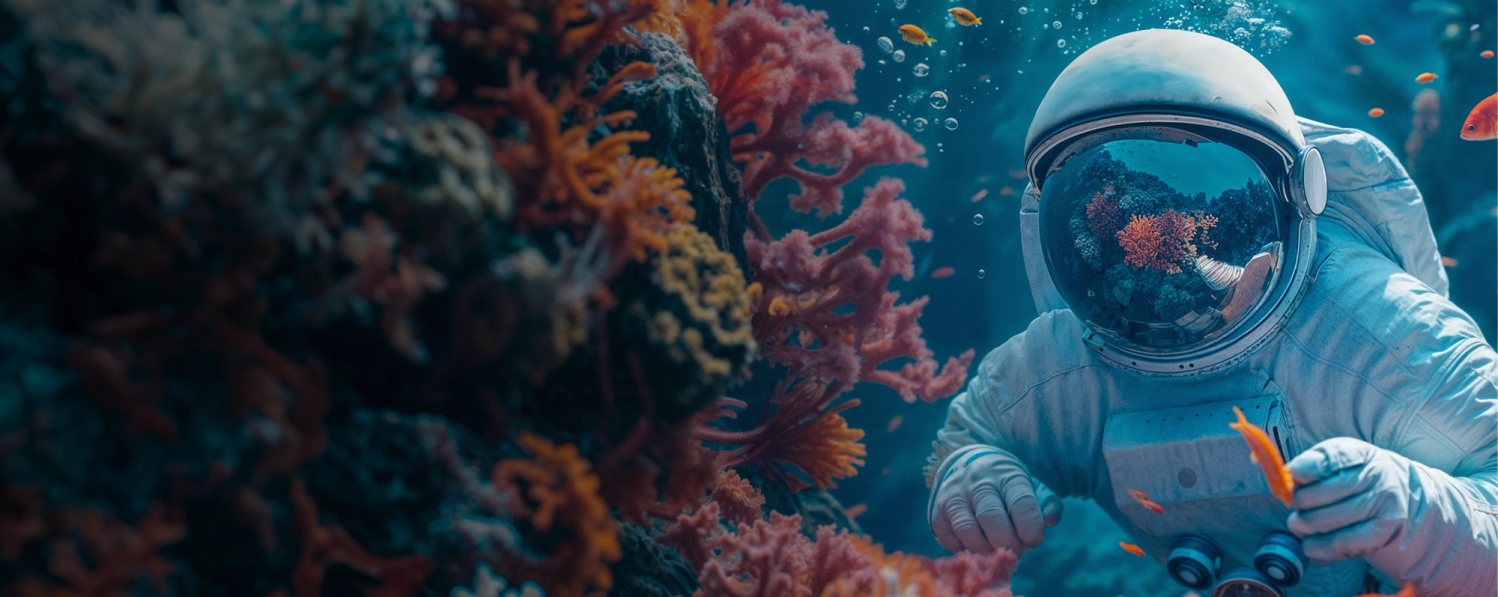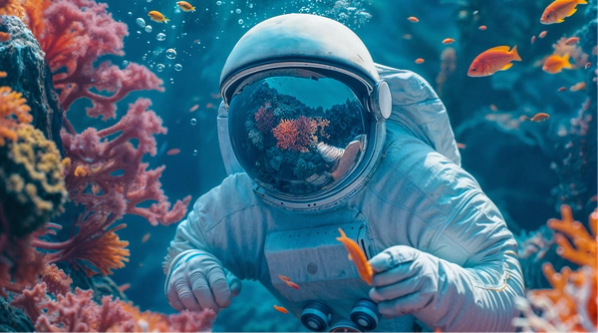The 15 Types of Graphic Design in 2025 (With Real Examples)

Graphic design goes beyond just looking good; it's a powerful tool for communication that can inform, persuade and engage audiences. It helps businesses reach new customers, build brand awareness, and drive sales. Today, I’ll help you explore various types of graphic design, providing examples to inspire and guide you. You'll learn about key elements and benefits of graphic design, understand its evolving nature with AI advancements, and discover how Superside integrates these innovations to offer superior design services.
Graphic design is more than just aesthetic appeal. It is a critical element of communication that can be used to inform, persuade, and engage audiences. When done well, graphic design can help businesses to reach new customers, build brand awareness, and drive sales.
In this article, I'll take a look at the different types of graphic design and share examples of each.
Fundamentals Every Graphic Designer Should Know
Graphic design focuses on creating visual content to communicate messages clearly and effectively, but this is just the tip of the iceberg.
All the visual elements, graphic design principles and graphic design skills necessary to succeed create a cocktail that varies depending on the type of graphic design you are working on.
Nowadays, the very nature of graphic design is changing. Visual communication is evolving thanks to advancements in AI, so it’s important to keep track of this evolution as time passes.
At Superside, we are pioneers in integrating AI into different creative workflows. While artificial intelligence isn’t a silver bullet, it certainly influences how the various design industries evolve.
Superside's Design Mastery: Success Stories to Inspire Your Work
In our experience handling graphic design services for over 500 ambitious brands over the past few years, we have learned that adapting to the needs and creative requirements of each customer is essential for success.
Our team of over 700 creatives is as diverse as it can get with professionals and experts in each type of graphic design out there including packaging design, web design, 3D design and more.
We are better than classic graphic design agencies because our unlimited creative service covers your ongoing design needs with fast turnaround times, AI-enhanced capabilities blended with human insights and differentiating work that will make you stand out.
15 Types of Graphic Design
By understanding the different types of graphic design, you can make informed decisions about finding a team that fits your individual and business needs. You’ll know what examples of work to look for and can check portfolios to see if a graphic designer has worked on a similar project in the past.
1. Brand design (visual identity design / corporate design)
While corporate design is focused on building an identity that conveys a certain message or values, brand design is all about creating a visual identity for a company or product. This includes everything from the logo and color scheme to the overall look and feel of the brand. Check out this branding we did for Entelo:
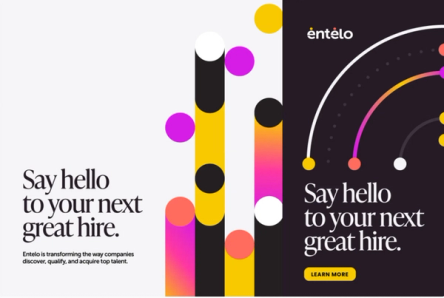
2. Publication graphic design
Publication graphic design is the designing of printed materials such as books, magazines, newspapers, and other types of publications. The goal of publication graphic design is to create a layout that is both visually appealing and easy to read.
This involves choosing an appropriate font, margin size and line spacing. Of course this type of design is common in magazines and brochures, but for any business with printed sales material, it can be an essential component to how the overall brand is received.
3. Environmental graphic design
Environmental graphic design is a relatively new field. It focuses on the use of graphics and signage to improve the look, feel, and function of public spaces. Common applications include wayfinding signage, murals, and even street art.
In many cases, environmental graphic design can help create a sense of belonging and identity for a community. As the world becomes more and more urbanized, environmental graphic design will likely play an increasingly important role in shaping the urban environment.
Subtypes of environmental graphic design include signage and murals. Here's a great example employed by Warby Parker:
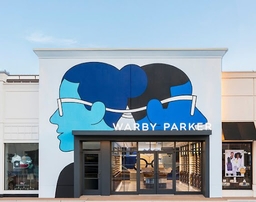
4. Packaging design
Packaging design involves creating packages that are both functional and visually appealing. It requires considering factors such as the shape and size of the package, the materials used, and the printing and decoration methods employed. A well-designed package protects the product inside and makes it easy for consumers to identify and purchase the item. As a result, packaging design plays a pivotal role in the success of any packaged product. This is what we did for Brio, who had the unique challenge of offering visual appeal alongside the clarity required for Covid testing products:
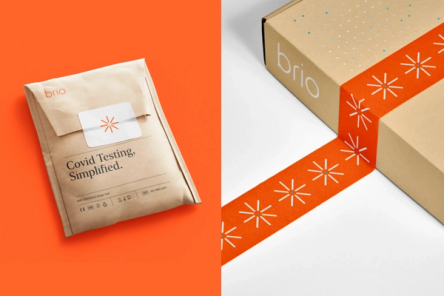
5. Web design (digital design)
Web design includes designing, creating, and maintaining websites. It covers a wide range of disciplines: web engineering, web architecture, web graphic design, user experience design, and search engine optimization. In order to be successful at web design, you need to have a strong understanding of what users want and need from a website. You must be able to translate that into a visually appealing and easy-to-use interface.
Also, web designers need to be aware of the latest trends and technologies to create websites that are both state-of-the-art and future-proof.
6. Advertising design
Advertising design creates visual communications used to promote or sell a product or service. This could include website banner ads, billboards, print ads in magazines or newspapers, and TV commercials.
Design plays a critical role in advertising, affecting everything from lead generation to brand awareness. The goal of advertising design is to get people's attention and persuade them to take action. To be effective, advertising design must balance eye-catching and memorable visuals with the message that the advertiser wants the audience to remember.
Consider this ad from Volkswagen in 1959. This ad is widely considered one of the greatest of all time, because the design clearly communicates the message they wanted to send: Volkswagens are small.
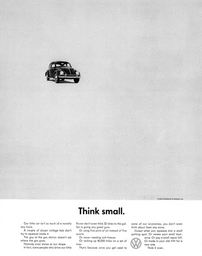
7. Marketing design
Marketing design is all about creating visual materials that effectively promote a product, service, or brand. This can include everything from ads and packaging to website design and social media content. A good marketing designer understands how to use color, typography, and other design elements to grab attention and communicate key messages. They also have a great understanding of the target audience and what will resonate with them.
Similar to brand design, marketing design is focused on marketing products and services rather than actively shaping the brand itself.
8. 3D Graphic design
3D graphic design is a branch of graphic design that uses 3D modeling software to create images or animations. The results can be displayed on a 2D surface such as a computer screen, or in a three-dimensional space such as in a virtual reality environment. 3D graphic design is used in a variety of fields, including architectural visualization and medical imaging.
While the basic principles of 3D graphic design are similar to those of 2D graphic design, the extra dimension adds an extra level of complexity. For example, designers must take into account the way light will interact with the surfaces of their models and how viewers will experience the resulting image or animation. As a result, 3D graphic design requires both artistic ability and technical expertise.
10. UI design
UI design is all about creating interfaces that are both easy to use and visually appealing. At its simplest, UI design is the process of creating buttons, menus, and other elements that users will interact with. However, UI design can also involve more complex tasks such as designing whole website layouts or developing interactive applications.
In order to be successful, UI designers need to have a strong understanding of human-computer interaction principles and an eye for detail. They must be able to work effectively with developers and other stakeholders to ensure that their designs are implemented correctly. With the ever-increasing importance of user experience, UI design is an increasingly in-demand skill.
11. Motion graphics design
Motion graphics design is a subset of graphic design that focuses on the creation of graphic elements for use in film, television, and digital media. Motion graphics designers use a variety of software programs to create 2D and 3D animations for title sequences, commercials, music videos and more.
The field of motion graphics design is constantly evolving as new software and technologies are developed. As a result, motion graphics designers must be able to keep up with the latest trends like kinetic typography, mixing 2D and 3D, or morphing to stay ahead of the curve.

12. Powerpoint design
Powerpoint design is the process of creating a presentation using Powerpoint software. This can involve creating slides, adding text and images, and choosing transitions and effects. Powerpoint design can be used for various purposes, from creating marketing presentations to educational slideshows.
13. Label & sticker design
Label design is the creation of labels for products. A good label or sticker design considers shape and size. It also needs to be readable and understandable, even from a distance. And it should be eye-catching enough to attract attention.
14. Typography design
Typography design is all about arranging typefaces, characters, and words on a page. In the days of print, typographers were responsible for choosing the right typefaces and arranging them in an aesthetically pleasing way. How do we know what’s aesthetically pleasing? We have da Vinci to thank for that!
Digital media has elevated the importance of typography. With a near-infinite number of fonts and typefaces available at the click of a button, designers have to exhibit typography knowledge when choosing the right font for their projects. In addition to being aesthetically pleasing, fonts also need to be legible and easy to read.
15. Vehicle wraps and decal design
Vehicle wrap and decal design is a process of creating custom graphics printed on large sheets of vinyl that are then applied to a vehicle. The vinyl is cut to fit the contours of the vehicle and heat-pressed to adhere to the surface. Vehicle wraps can be used for promotional purposes, such as displaying a company logo or advertising a new product or adding some personality to a plain vehicle.
Decals are smaller vinyl graphics that are often used to accentuate a wrap design or to add elements that would be too small to print on a large sheet of vinyl. If you’re looking for a mobile way to promote your business, vehicle wraps and decal designs are great options.
Key Elements of Graphic Design
Although there is a range of different types of graphic design, there are some fundamental elements that they all share.
Key Element 1: Balance
Balance, symmetrical or asymmetrical, refers to the method by which the various elements are laid out. Many designers tend to center graphic design components and then build out from there. However, an asymmetrical approach can often create more meaningful design.
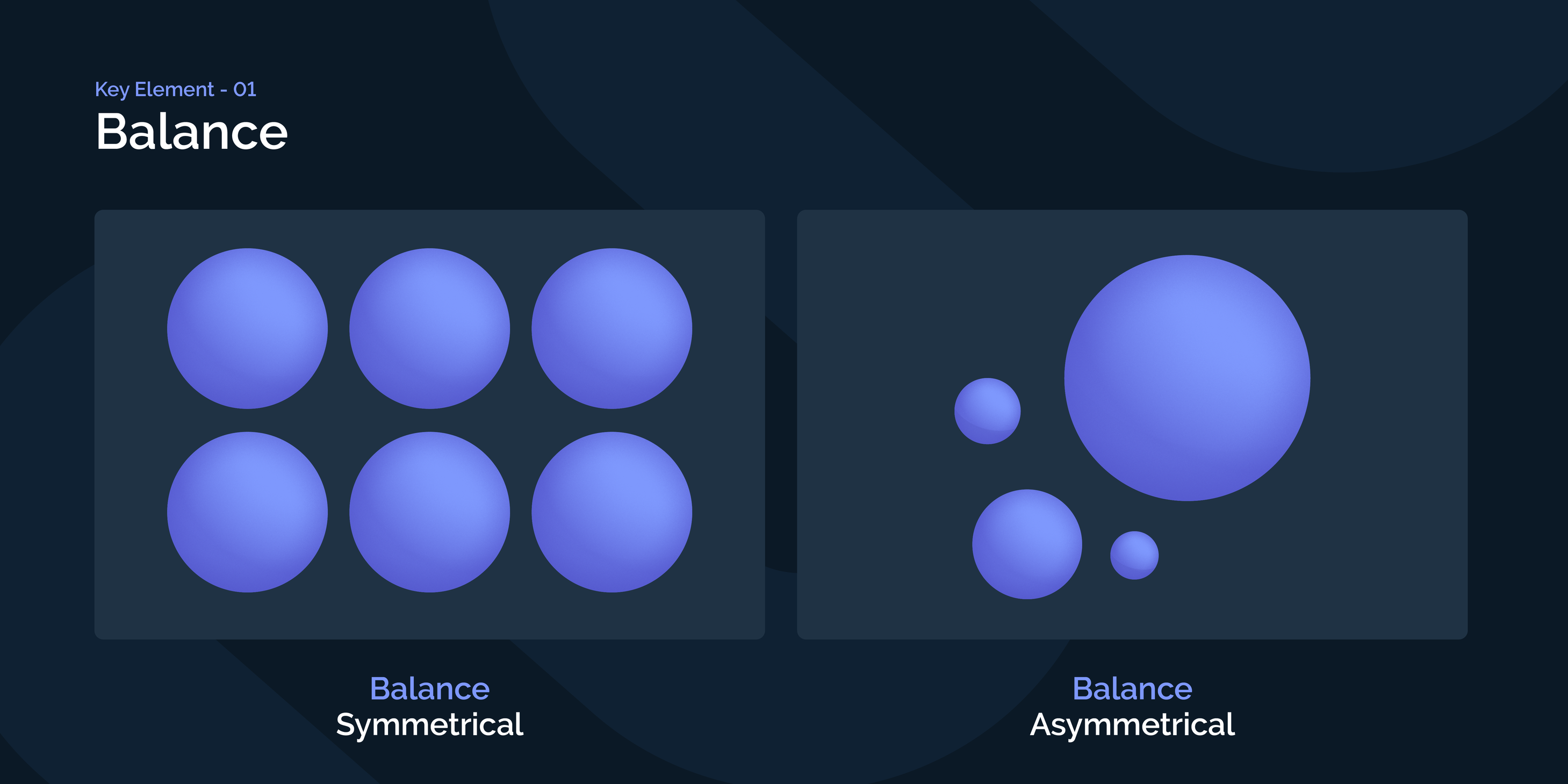
Key Element 2: Hierarchy
Hierarchy denotes which components are more or less important, based on the weight and visual priority they are afforded. Establishing a visual hierarchy allows the designer to convey the concept and message easily. Hierarchy designs can be used to provide movement and flow. Consider this side-by-side example:
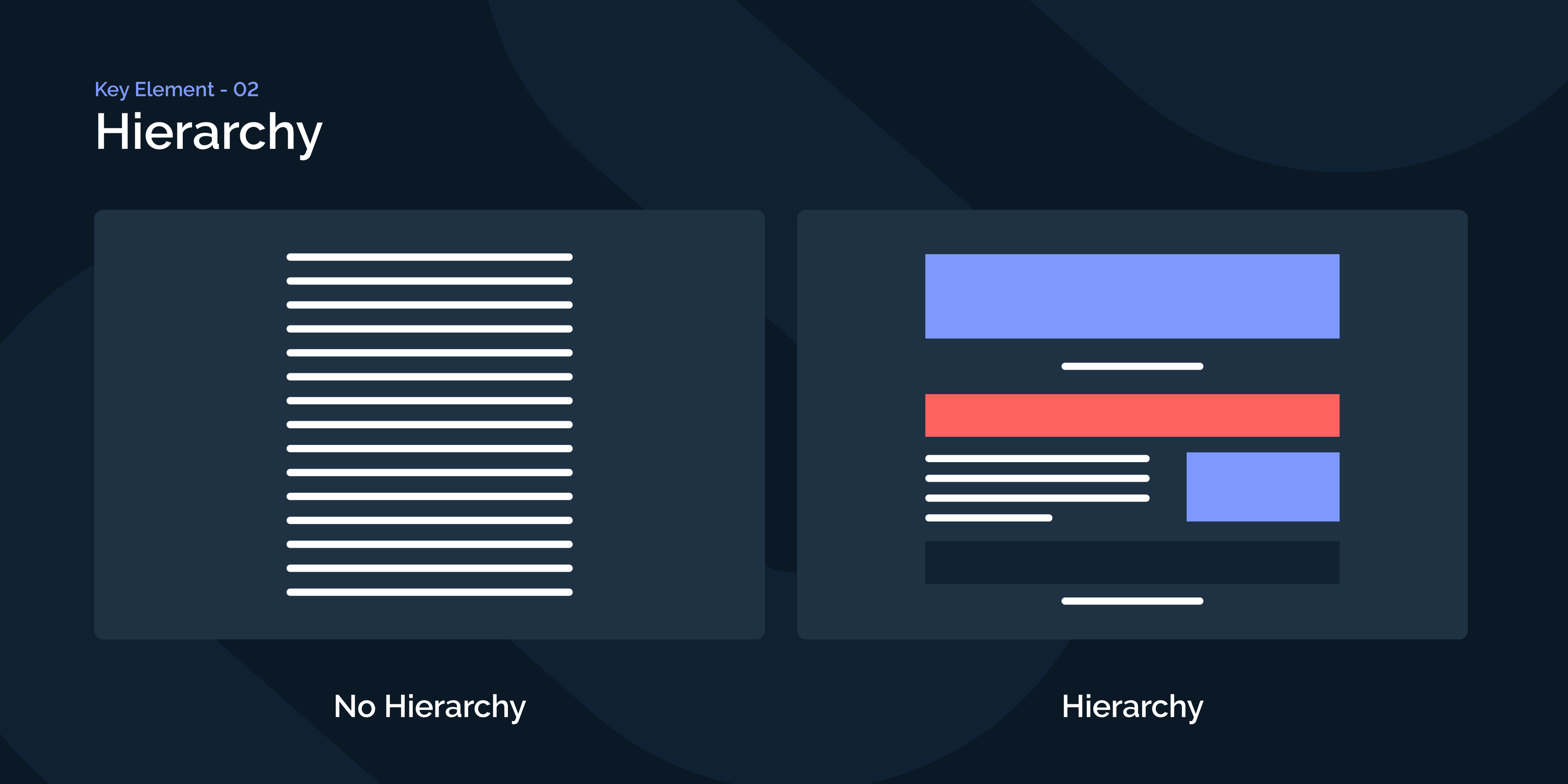
Key Element 3: Alignment
Alignment of visual components impacts how people comprehend and interpret the intended message. The alignment of many graphic elements is optimized to enhance ease of scanning and reading, helping users retain information better.

Key Element 4: Repetition
Repetition helps the viewer better remember things and is often used to boost the impact of the message. The goal is to leverage the repetitive design or elements and create an association with your brand.

Key Element 5: Contrast
Contrast is all about combining different elements, colors, or designs to create visually appealing images. Contrasting colors can bring attention to a specific object on the page while also eliciting intended emotions like happiness, urgency, tranquility, or FOMO.
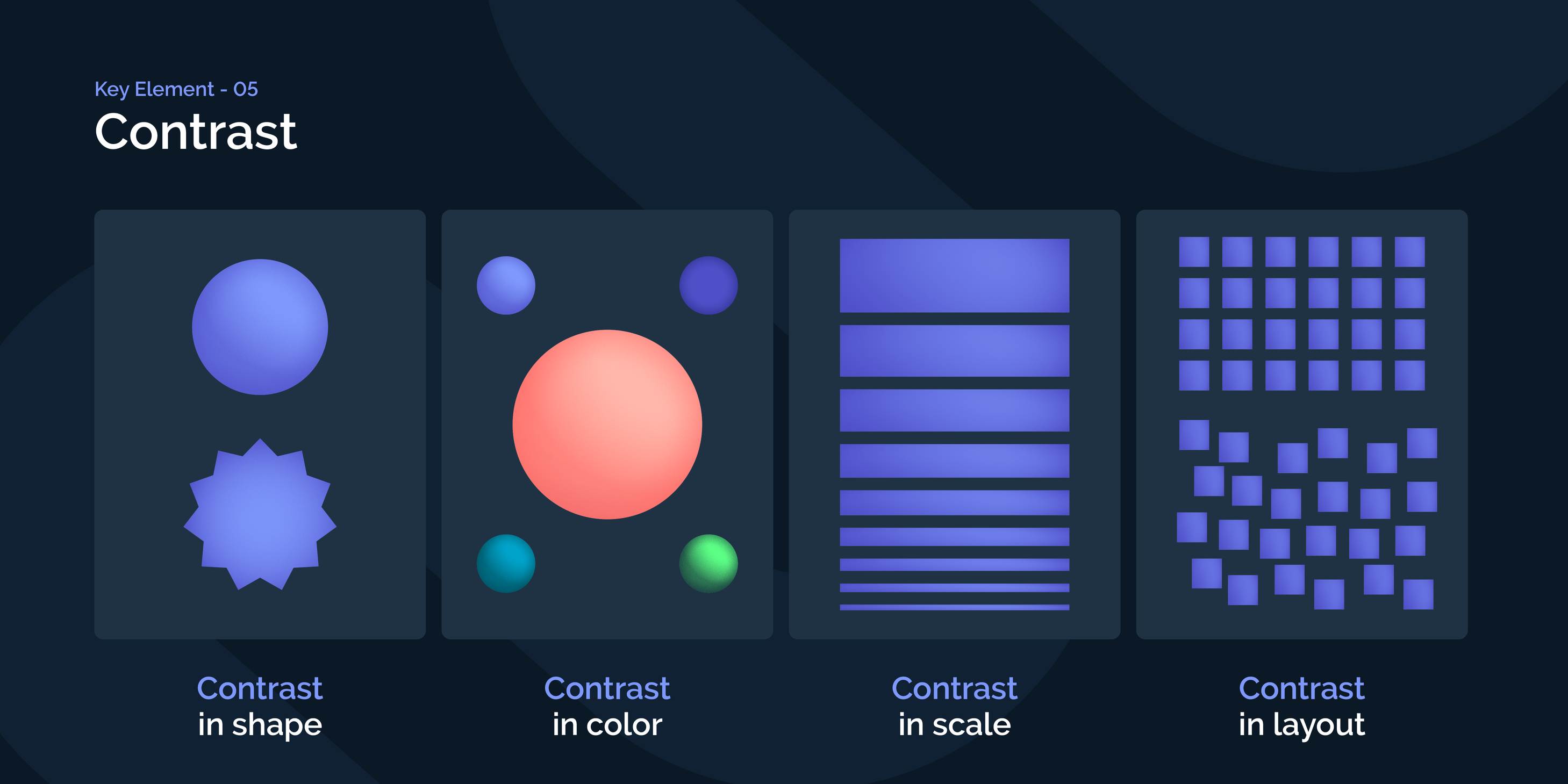
Benefits of Graphic Design
Aside from visual excellence and a key communication factor, the benefits of graphic design include:
- Providing clarity
- Emphasizing a point
- Increasing safety and awareness
- Spreading key information at a glance
- Influencing and driving change
Along with evolving technologies, graphic design is constantly changing. Similar to linking art to its time in history, graphic design morphs to reflect the age it was created. Graphic design is rarely a "set it and forget it" type of discipline.
Consider this example, and how the design has adapted with the times:
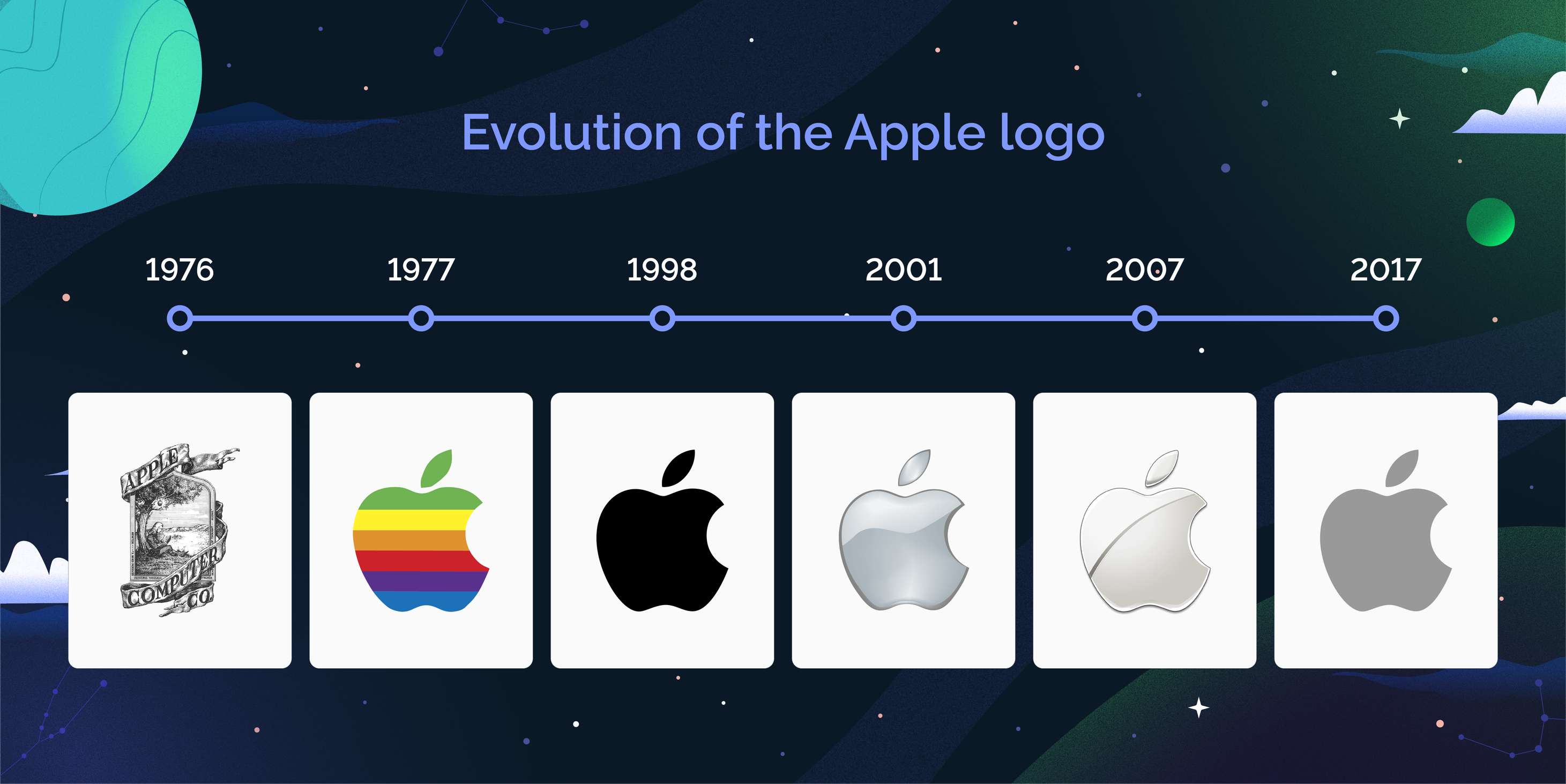
Navigating Your Graphic Design Career Options
Navigating your graphic design career options involves exploring the diverse opportunities within the field, each offering unique challenges and rewards. Understanding the various sectors and specialties within graphic design allows you to identify where your skills and passions align best.
Do you want to create designs for a big agency in San Francisco, or would you prefer to deliver social media graphics for medium-sized businesses?
Whether your dream is to work in print and publication industries or turn into a graphic designer specializing in digital marketing, there are different types of graphic design careers you can pursue. In my experience, focusing and mastering a single design style is what has turned average folks into some of the most famous graphic designers in the world.
Either way, improving your skills in design is necessary, and that’s something everyone, from rookies to creative directors, will agree with. These are just some of the graphic design career paths I can think of from the top of my head:
- Brand Identity Designers
- Marketing Designers
- Advertising Designers
- User Interface (UI) Designers
- Industrial design specialist
- Web Designers
- Publication Designers
- Packaging Designers
- Motion Designers
- Environmental Graphic Designers
- Illustrators
- Infographic Designers
- Visual Identity Designers
- Product Designers
- Art Directors
- Logo Designers
- Publication Design Specialist
- Typographic Designers
Kickstart Your Graphic Design Journey with Superside
Graphic design is an essential part of any marketing or branding strategy. It's the process of creating visuals that communicate a message to the viewer and help to create a lasting impression. Good graphic design can make (almost) all the difference to the success of a brand or product.
That's why it's important to hire a team of experts who know how to create visuals that will resonate with your target audience.
At Superside, we have a team of experienced graphic designers who can help you to create stunning designs that will make your products stand out from the crowd.








